I have in previous entries (July 2012 and July 2013) written about a peer mediation initiative called the Peacemakers Conference. The purpose of the Peacemakers Conference is to teach 13-16 year olds how to resolve conflicts amicably in a workshop cum competition format. This year’s Peacemakers Conference was held from 22 to 24 June 2021.
Because of the ongoing pandemic, the Peacemakers Conference was run entirely online allowing us to make the programme available to a larger number of participants and to benefit from the coaching of mediators not just from Singapore, but from around the globe.
As in previous years, we asked students from different schools to work together to create a visual metaphor for mediation. This started in 2015 and has become a regular feature in the Peacemakers Conference. Metaphors from previous years can be found in the entries for November 2015, August 2016, July 2017, July 2018, July 2019 and August 2020.
This year, because of the number of students involved, there were 27 visual metaphors. As this would be too many to share in this blog entry, I would like to share a selection which I found interesting. For each of these, an image of the metaphor is shared along with a description of the metaphor.
I would like to acknowledge the efforts of Ms. Sabrina Chau, Mr. Sean Lim and the Peacemakers Facilitation team for capturing the description and images of each of the metaphors that appear below.
1. Mediation is like a Penguin
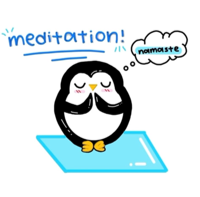
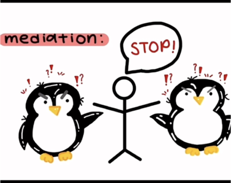
The penguin is a large southern sea bird in the southern hemisphere. Penguins represent the process of mediation. They are black and white, which represent neutrality. They generally live in remote continental regions with few land predators which promotes confidentiality. They conserve their heat by working together. This represents how each party needs to work together in the mediation to reach reconciliation. Although they cannot fly, they can swim. This shows their adaptability. This ties in nicely to the way mediators need to have intellectual flexibility during problem solving. Lastly, they also use many vocal and visual displays to communicate, which is similar to a mediator when gathering information and checking.
2. Mediation is like a Salad
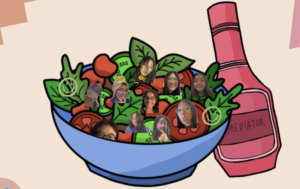
Mediation is like a salad containing different types of leafy vegetables and dressings to make up a delicious and healthy meal. Just like a salad, mediation is made out of different aspects of exercises, qualities and techniques that complement each other. The different types of leafy veggies represent the individual options and solutions that both parties can discuss and agree on. The colour of the red juicy tomatoes is a symbol of unity and care, which represent the goals and qualities needed in a mediation. The rich and raw green cucumbers portray how mediation is subtle yet nurturing, just like the cucumbers which are good sources of water (even if it doesn’t look like it). When you bite into the salad, it makes a satisfying crunch which depicts the communication that is crucial in mediation. The sauce on the side ties the whole salad together perfectly. This is just like the mediator who summarises and wraps up the conflict so that all parties can move past it and work towards the ever so refreshing future.
3. Mediation is a like a Canvas
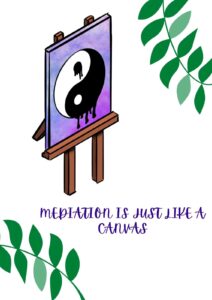
Mediation is like a canvas. Without the painter, colours on a canvas have no meaning. The painter gives the canvas life and creates an array of colours, whilst maintaining the harmony of an image. Similarly, the mediator starts off with a blank canvas, sorting through the party’s emotions (Colours) and situation, before arriving at a cohesive outlook on a resolution.
4. Mediation is like Building a Bear
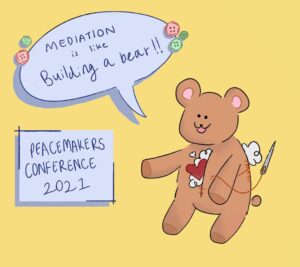
Mediation is just like building a bear: it’s not im-paw-ssible! Firstly, there are many steps required to build a bear, similar to the steps in mediation! You’ll need to follow each step in order to achieve a successful result. And just like in the interactive process of building a bear where we pick from collections, voices and clothes, parties should be given a choice on what they want to do to solve the problem to fit their interests and individual needs, which is party autonomy. Similarly, about the different accessories and clothes each bear can have, these different accessories and clothes also represent mediation, just like the different possible options that mix-and-match, fulfilling the unique interests of the different parties. Not to forget, when building a bear, there’s a step where you put in a heart! This can be related to how you’ll need to put in your heart as a mediator, and how you need to be sincere when mediating, for the mediation to go successfully. And just like the closing of a mediation, when you’re done with the bear, the result probably leaves you happy and content!
5. Mediation is like Fire
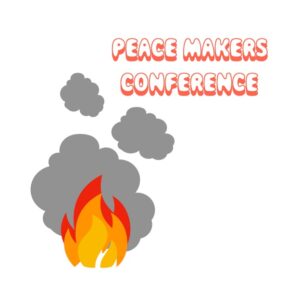
Mediation is like fire because if the situation is not controlled, it will cause the relationship between both parties to deteriorate and ruin everything. However, if the mediator handles the situation properly, then the fire transforms into a form of energy, a source of life and a source of hope.
6. Mediation is Baking Cookies
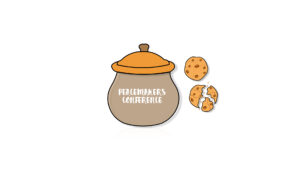
Mediation is like baking cookies. If you don’t follow the right steps, the cookies will not taste good. However, if you follow the recipe correctly, you will get delicious and savoury cookies. This is exactly like mediation. With the correct steps and mindset, mediation can help overcome conflicts in relationships. The baker, as well as the mediator, needs to go through each step carefully to ensure that everything works out smoothly. The cookies are the relationships. After the session, the cookies either turn out good or bad. This depends on how the baker goes through the process. Adding too much or too little of one ingredient does not result in a cookie with a balanced flavour. As such, the baker needs to pay attention throughout the process.
7. Mediation is like an Owl
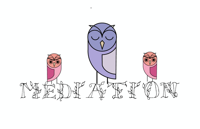
Mediation is like an owl. In “Is the Wise Owl Wise?” by Shoo Rayner, the owl guides and helps the fish solve the problem. Instead of telling the fish what to do, it asked a great question. “What do you think you should do?” This tells us that the owl is letting the fish solve the problem for themselves instead of creating a solution for them. This question allowed the fish to think further and find an option to solve the matter. The owl helps the parties solve the problem for themselves. Just like in mediation!
8. Mediation is like Tuning an Instrument
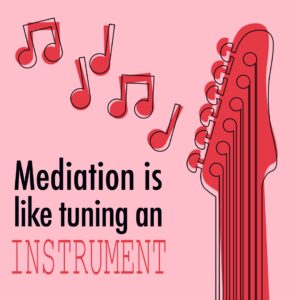
When you tune an instrument like the ukulele correctly, it sounds nice when you play it. However, when you tune it wrongly, sometimes the result doesn’t satisfy you. It’s the same with mediation, where choosing precise words to communicate with all parties can help understand each other more deeply, and thus the outcome would be a better one, with all parties being content with it. However, patience is required for handling conflict. During conflict, not everything is music to our ears. Everyone is arguing for a way to resolve the problem with the best solution. This, much like the correct tune, is not easy to find. Mediation requires patience and precision in picking out neutral words. This is similar to how tuning an instrument correctly requires patience and precision.
9. Mediation is like Subway
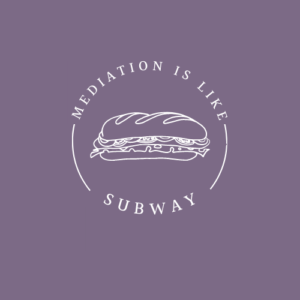
Mediation is like Subway because it represents a 3 way partnership where parties come together along with the mediator to select the different ingredients as parties move along the various stages of mediation. The mediator acts as the server. When the two parties are confused about the steps that they should take in the process of mediation. The server will ask questions that entail various answers about their preferences and tastes. This helps them choose suitable condiments to be added on to the sandwich. In Subway, there are different kinds of sandwiches. This represents the different ways of approaching problems. Some conflicts are easier and shorter like 6 inch sandwiches, while others might be longer like the footlong sandwich.
10. Mediation is like a Rubik’s Cube
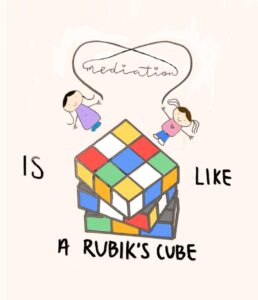
Each rubik’s cube has 6 different sides with 6 different colours. There is always more than one side of a story. Mediation is like a rubik’s cube because solving the cube is a long process and one cannot take shortcuts. Mediators do not add their own substance to a discussion. Instead, they direct and facilitate it, like how one twists and turns a rubik’s cube to solve it. Like a rubik’s cube, conflicts have many different facets like emotions, logic, misunderstandings, and interests. The mediator has to know and ensure all sides have been taken care of. Just as there is always a solution for the rubik’s cube, there is always a way to solve a conflict.
11. Mediation is like Lego
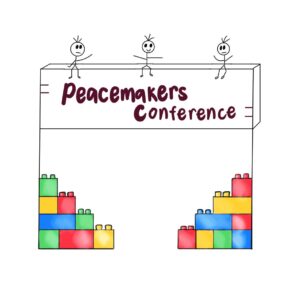
Mediation is like lego because:
● You can work together while overcoming obstacles;
● We are building back the relationship that was once there;
● We are building each other up;
● When building, you will face troubles along the way;
● It is a process that might take some time, but the end result is worth it;
● You can solve the conflict block by block;
● It is a process with specific steps and procedures; and
● We can make very good progress.
12. Mediation is like a Sunrise
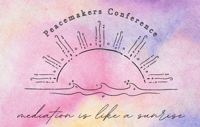
The metaphor we have selected is the sunrise. Before the sunrise, it is night time. Night time is very dark and gives a negative feeling, which is something we would have during a conflict (like all those sad and angry emotions). However, the sun comes up during the sunrise. The sun has light, which sheds light on the truth because some conflicts might be caused by misunderstandings. Mediation can help both parties to understand the different sides of the story and hopefully help them come to an amicable ending. Mediation is also the release of your different emotions. The negative emotions can be transformed into more positive emotions (like from anger to relief). These different emotions are like different colours that create the beautiful scene of the sunrise.
13. Mediation is like a Wave
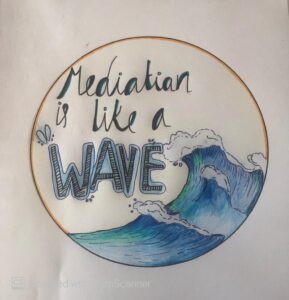
The process of mediation can be reflected in wave patterns. As the sea transitions from low tide to high tide, the waves become larger and more daunting. New waves form while old ones crash in a seemingly endless cycle. This can be overwhelming and it may seem impossible for the serene sea to return. However, over time, the large waves become gentler and low tide returns. The same can be said about conflict. Emotions like anger and frustration tend to make issues seem irreparable. But the more we learn about one another and look at things through new perspectives through mediation, even the most daunting problems can eventually fizzle out. The evident correlation between these two ideas highlight the power of mediation as a problem solving tool, making it the ideal metaphor.
14. Mediation is like a Puzzle

Everything requires a process. When solving a puzzle, you need to find and sort the pieces just like you need to gather and check information when mediating. Every piece looks different. Similarly, every position can have multiple interests and varying perspectives. The process of putting the pieces together and figuring out which fit together and which don’t is similar to exploring different solutions and how they benefit each party. The sense of accomplishment that the puzzle maker feels when that last piece fits into place is the same as what the mediator feels when the conflict is resolved. All the individual pieces work together and a beautiful image is formed at the end of the puzzle. This resembles the relationship between the parties and the agreement they reach. This is why we feel that mediation is like solving a puzzle.
________________________
To make sure you do not miss out on regular updates from the Kluwer Mediation Blog, please subscribe here.



Thank you for putting this out there. I agree with your opinion and I hope more people would come to agree with this as well.